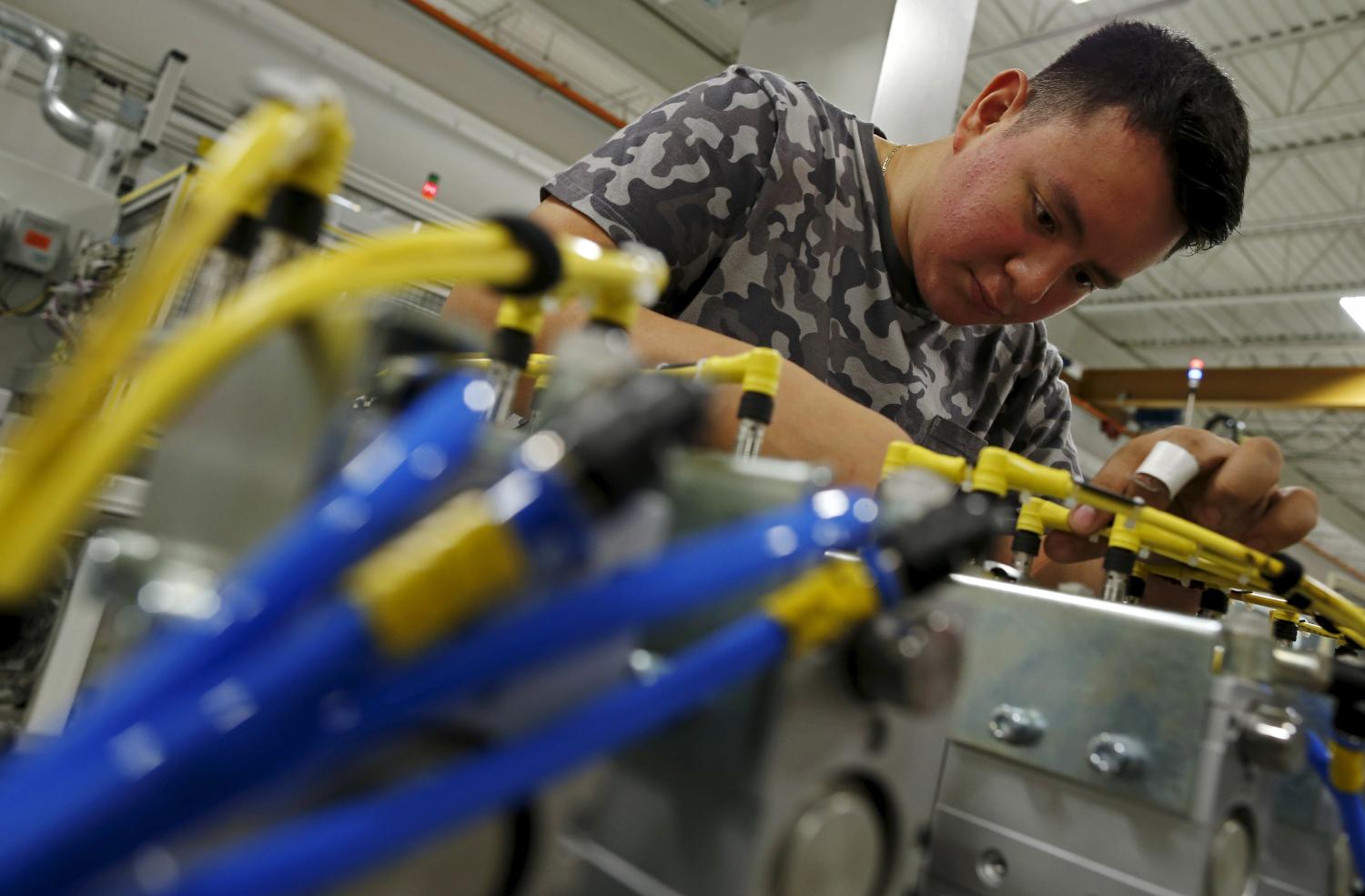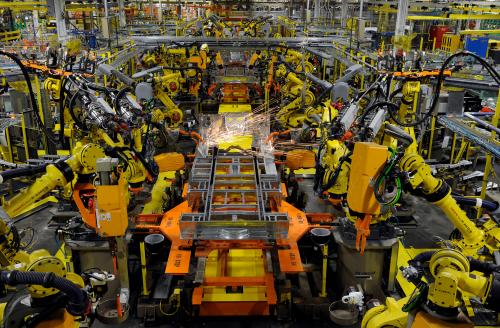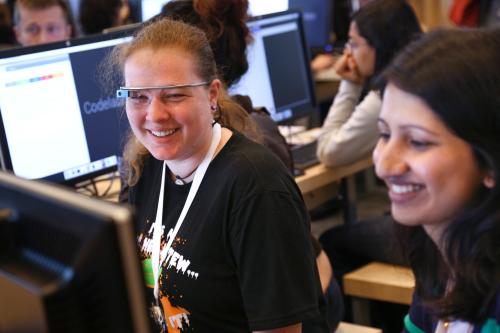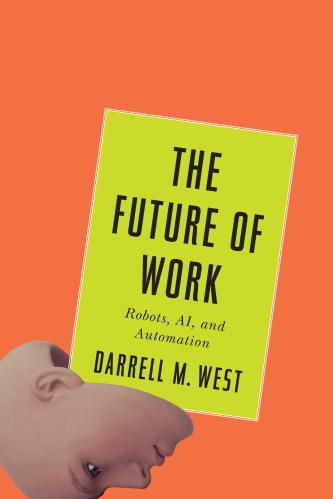This is the first section of “Employer Perspectives on Workforce Development,” a series that chronicles how business leaders are adapting to the future of work.
The nature of work is rapidly changing due to emerging technologies and disruptive forces, such as artificial intelligence, the gig economy, and automation. The exact effect of these and other changes remain unknown, but one thing seems certain: The skills that employers value and rely upon are changing. In turn, a “skills gap” has developed in which employers struggle to hire appropriately trained workers. A recent Deloitte report illustrates the breadth of this problem in the context of manufacturing alone: “[T]he skills gap may leave an estimated 2.4 million positions unfilled between 2018 and 2028, with a potential economic impact of $2.5 trillion.”
The skills gap poses a pressing policy problem, and employers are among those on the frontlines of this battle. In this context, it is important to understand employer perspectives on hiring, training, and retraining a skilled workforce. Through interviews with four different manufacturing employers—ranging in size from under 1,000 employees to over 41,000 employees—this “Employer Perspectives on Workforce Development” series offers a window into the challenges that employers are encountering as well as the innovative solutions they are pursuing with respect to workforce development in an era of rapid technological change. Each interview explores questions such as:
- How are technological changes shaping your workforce needs?
- What challenges have you encountered with respect to recruiting, training, and retaining appropriately educated and skilled employees?
- What kind of success have you had in terms of workforce development, and what factors have been important to this success?
Several caveats are in order before proceeding. First, this series is not meant to provide a representative or comprehensive overview of the “employer perspective” in the U.S. In addition, employer perspectives are just one dimension we should consider when addressing workforce development challenges. Nonetheless, employers play an important role in identifying challenges and subsequently creating, piloting, and refining innovative solutions. Engaging in this process may in fact be a matter of survival, given the large-scale changes that are reshaping the workforce environment. As such, exploring how employers experience and respond to these challenges is a valuable part of the larger conversation on workforce development.
The role of employers in addressing the skills gap
To contextualize the posts in this series, each of which focuses on a particular employer’s experience, it is worth beginning with a discussion of the skills gap and some of the challenges that employers face in addressing this gap and related issues. The term “skills gap” describes a fundamental mismatch between the skills that employers rely upon in their employees, and the skills that job seekers possess. This mismatch makes it difficult for individuals to find jobs and for employers to find appropriately trained workers.
Employer leadership is a key part of addressing this mismatch. Writing for the Harvard Business School series “Managing the Future of Work,” Joseph Fuller argues that “[b]usiness leaders must champion an employer-led skills-development system, in which they bring the type of rigor and discipline to sourcing middle-skills talent that they historically applied to their materials supply chains.” One example of a strategy that focuses on employer leadership is the U.S. Chamber of Commerce Foundation’s Talent Pipeline Management (TPM) Initiative, which “shifts employers into the driver’s seat to proactively lead partnerships with talent providers.”
While employer leadership is important, creating robust talent pipelines also requires cross-sector collaboration. Indeed, experts that argue for employer and state leadership alike emphasize the importance of collaboration between government, education, and business. For example, Fuller focuses on business leadership while highlighting “the need for leaders from the business, education, and political spheres to act in concert.” A recent report from the Georgetown Center on Education and the Workforce that focuses on state leadership in creating career pathways makes a similar argument regarding collaboration across these sectors. Referencing recommendations from the International Economic Development Council, the authors argue that “strong alliances” between economic developers, postsecondary institutions, and businesses “can together better address the mismatch between jobs and workers.” Keeping in mind the importance of this collaboration, this series focuses primarily on employers’ efforts to develop and maintain a healthy workforce.
Challenges in addressing the skills gap
For many employers, taking on a leadership role in workforce development will require changes to prior practice. Fundamentally, employers must identify and signal the skills they need, as well as develop mechanisms to recruit, train, and retain employees. However, many employers are not prepared to do so. Underscoring this point, Fuller argues that employers must “radically rethink their businesses’ roles in nurturing talent.”
“Fundamentally, employers must identify and signal the skills they need, as well as develop mechanisms to recruit, train, and retain employees.”
A recent report from The Brookings Institution and The National Center for the Middle Market helps to illustrate the types of changes that employers should consider. Focusing on middle market companies with annual revenues between $10 million and $1 billion, the authors identify common practices that hinder employers’ abilities to develop talent pipelines. The challenges and solutions identified in this context are likely broadly applicable, as companies of all sizes contend with the skills gap and the rapid pace of change in the nature of work.
The authors find that many middle market companies are not equipped to recruit, hire, train, and retain a skilled workforce. Among other factors, they draw attention to the role of HR departments. Strategic, forward-looking recruitment and hiring are important elements of developing a skilled workforce, but in 44% of middle market firms, HR departments are primarily operational rather than strategic. The authors describe how “lean HR teams” lack the time and resources necessary to focus on strategic recruitment. Perhaps as a result, many middle market firms lack a clear process for recruiting new employees; 59% wait until there is a specific position to be filled rather than drawing upon ongoing outreach efforts.
In addition, the report describes how a lack of systematic, internal training programs can make it difficult to develop talent internally. Many firms thus find it difficult to create a “deeper bench”–while 55% of middle market firms have an ongoing training system, 45% do not. In addition, 61% of middle market firms do not have systems in place for internal career advancement. And only 30% of firms partner with educational or training organizations, “despite the fact that such partnerships could help companies bolster the capabilities of their internal HR staff.” In short, the authors identify a number of limitations with respect to employers’ capacity to hire, train, and retain skilled workers.
The authors also identify a number of proactive steps middle market employers can take to address these shortcomings and, in doing so, create more robust talent pipelines. These strategies include investing in talent planning through strategic HR initiatives, developing internal career ladders and internship programs, and building partnerships with educational institutions and others, such as local chambers of commerce and business associations and trade groups.
Windows into employers’ experiences
As the preceding discussion illustrates, there is a healthy and growing body of research on the challenges and potential solutions related to the skills gap. This series seeks to provide additional, on-the-ground insight into how employers encounter and address these challenges. Further, this series situates each employer’s experience in research and recommendations related to the skills gap and workforce development more broadly. The series concludes with a post that reflects on the insights shared by employers, identifying themes, promising solutions, and potential next steps for policymakers.
Read the next section of “Employer Perspectives on Workforce Development,” or visit the series homepage.
The Brookings Institution is a nonprofit organization devoted to independent research and policy solutions. Its mission is to conduct high-quality, independent research and, based on that research, to provide innovative, practical recommendations for policymakers and the public. The conclusions and recommendations of any Brookings publication are solely those of its author(s), and do not reflect the views of the Institution, its management, or its other scholars.
The Brookings Institution is committed to quality, independence, and impact.
We are supported by a diverse array of funders. In line with our values and policies, each Brookings publication represents the sole views of its author(s).








